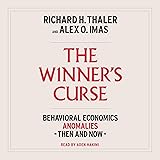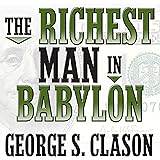The global economic landscape is signaling a notable shift, with the U.S. dollar index notably tumbling over 10% this year against other major currencies. This significant depreciation underscores a broader narrative of financial instability and the search for robust stores of value, a sentiment powerfully articulated by Bridgewater founder Ray Dalio. As highlighted in the accompanying video, Dalio’s long-standing advocacy for gold and silver as essential components of a diversified portfolio gains even greater relevance in the current environment. His insights suggest that traditional fiat currencies face severe devaluation risks due to mounting global debt pressures, positioning precious metals as increasingly vital assets for investors.
Ray Dalio’s Perspective on U.S. Dollar Devaluation and Global Debt
Ray Dalio, a highly respected figure in global finance, has consistently warned about the unsustainable path of excessive spending and spiraling debt by the U.S. government. Speaking at the Future China Global Forum 2025, Dalio emphasized that the world’s largest economy is heading towards a significant fiscal crisis, which could fundamentally threaten its monetary order. This perspective is not new for Dalio, who has been a proponent of gold for a considerable time, particularly as the purchasing power of the U.S. dollar has steadily eroded.
The devaluation of the dollar is a multifaceted issue, exacerbated by periods of quantitative easing, near-zero interest rates, and subsequent rate hikes. Such volatility diminishes the dollar’s appeal as a stable repository of wealth. Dalio argues that the reluctance of global governments to rein in their spending and borrowing habits makes all currencies susceptible to losing their appeal. Consequently, he suggests that assets with constrained supply, such as gold and certain non-fiat currencies, become more viable options for wealth preservation.
The Tipping Point of U.S. Debt
Echoing Dalio’s concerns, Ng Kok Song, founding partner and chairman of Avanda Investment Management, indicated that the unsustainability of U.S. debt has “reached the tipping point.” While the exact timing of a crisis remains unknown, the fiscal risks are not confined to the U.S.; similar vulnerabilities are observed in major economies like France, Japan, and China. This global pattern reinforces the urgency for investors to reassess their portfolio allocations.
Dalio meticulously details the staggering figures behind the U.S. debt crisis. He states that the U.S. government’s swelling debt is currently six times the amount of money it has taken in. To address the immediate financial requirements—a $2 trillion deficit, $1 trillion in interest payments, and the rollover of $9 trillion in maturing borrowings—an additional $12 trillion in debt would need to be sold. However, Dalio points out a critical supply-demand imbalance: “the market in the world does not have that same sort of demand.” This lack of demand for such a massive issuance of debt poses a significant challenge to global financial stability.
Despite these dire warnings, Dalio believes the U.S. dollar will likely retain its dominant role as a “medium of exchange,” especially in international trade. Nevertheless, the increasing influence of the Chinese yuan in global transactions is expected to gradually diminish the dollar’s overall dominance, removing some of its historical “shine.”
Gold and Silver as Strategic Investments
Given the macroeconomic backdrop, both Ray Dalio and many market analysts, including the speaker in the video, advocate for strategic investment in gold and silver. Dalio specifically recommends allocating approximately 10% of one’s portfolio to gold as a hedge against currency devaluation and economic uncertainty. The appeal of precious metals lies in their historical role as stores of value and their finite supply, which inherently limits inflationary pressures.
The past year has seen significant movement in the precious metals sector. For instance, the VanEck Vectors Gold Miners ETF (GDXJ) has recorded an impressive 79% gain in the last year, demonstrating a strong bullish trend in gold mining stocks. Similarly, the Amplified Junior Silver Miners ETF (SILJ) is up 58% over the same period, while the Sprott Gold Miners ETF (SGDM) has surged by 81% in the last year and 59% over the past five years. Even newer offerings like the Sprott Silver Miners ETF (SLVR) have seen substantial increases, with a 74% gain since the beginning of the year from January.
While these performance figures are compelling, investors are wise to consider the cyclical nature of commodity markets. As the video highlights, SILJ, for example, is up 58% in the last year but only 30% over the last five years, indicating periods of consolidation or decline. The current prices for senior silver miners (SIL) have only recently surpassed highs last seen in 2016 and even 2012, underscoring that significant upward movements can take time to materialize and sustain.
Diversification and Long-Term Outlook
The core message from Dalio and reinforced by the video’s commentary is the critical importance of diversification. While gold and silver offer protection and growth opportunities in specific market conditions, they are part of a broader investment strategy. Dalio himself is a strong proponent of a diversified approach, spreading investments across various asset classes to mitigate risk.
For investors looking beyond direct gold and silver bullion, the market offers several attractive options in mining ETFs. These ETFs provide a leveraged bet on the underlying precious metals, offering greater potential upside if prices continue to rise. Key ETFs mentioned include:
- GDX (VanEck Gold Miners ETF): Focuses on senior, more established gold miners.
- GDXJ (VanEck Junior Gold Miners ETF): Targets smaller, more volatile junior gold miners.
- SIL (Global X Silver Miners ETF): Invests in senior silver mining companies.
- SILJ (Amplified Junior Silver Miners ETF): Concentrates on junior silver producers.
- SGDM (Sprott Gold Miners ETF): A prominent ETF tracking gold mining companies.
- SLVR (Sprott Physical Silver Trust or similar Sprott Silver Miners ETF): Focuses on silver miners, with a notable recent performance.
The speaker in the video boldly predicts a future where gold could reach $5,000 to $10,000 per ounce, and silver could climb to $100 per ounce. These predictions, while ambitious, are rooted in the expectation of continued fiat currency devaluation and escalating global debt. Historically, precious metals have served as reliable hedges during times of economic uncertainty and inflation, making them attractive for investors seeking to protect and grow their capital.
Furthermore, the discussion briefly touches upon Bitcoin as another non-fiat asset with constrained supply, drawing parallels to gold’s role as a store of value and ease of international transaction, albeit with significantly higher volatility. However, the immediate focus remains firmly on gold and silver due to their established history and relative stability compared to cryptocurrencies.
Ultimately, the current environment, characterized by significant U.S. dollar devaluation, burgeoning national debt, and persistent inflationary pressures, creates a compelling case for considering investing in gold and silver. These precious metals, alongside well-chosen mining ETFs, offer a potential avenue for wealth preservation and growth as the global monetary order continues to evolve.











